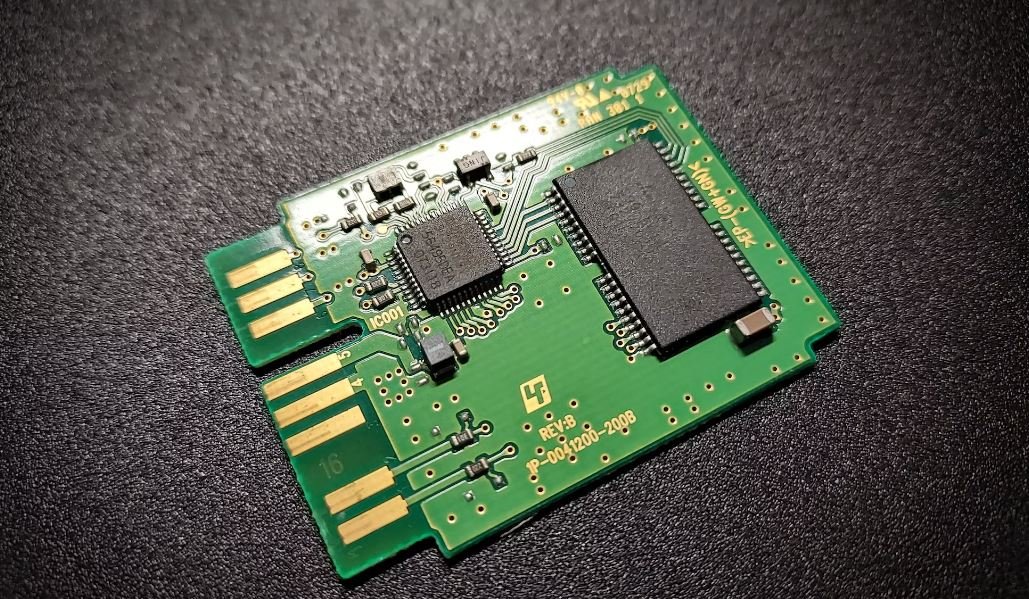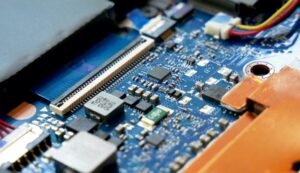Neuralink YouTube: Unveiling Musk’s Brain-Machine Interface
Neuralink, a revolutionary neurotechnology company founded by Elon Musk, has recently released a captivating video on its YouTube channel, showcasing the progress made in developing a brain-machine interface. This long-awaited update has sparked excitement and speculation within the scientific and tech communities. In this article, we will explore the key takeaways from the Neuralink YouTube video, highlighting the potential of this remarkable technology.
Key Takeaways:
- Neuralink has made significant strides towards developing a brain-machine interface.
- The interface aims to bridge the gap between humans and artificial intelligence.
- Neuralink’s latest breakthrough allows an individual to control a computer using only their thoughts.
- The technology holds promise for treating neurological disorders and enhancing human cognition.
- Implanting the device involves a minimally invasive surgical procedure.
**Neuralink’s video provides an enlightening glimpse into the future of brain-machine interfaces**. The company’s mission is to ultimately merge humans with AI, enabling symbiotic collaboration and enhancing human capabilities.
The Neuralink YouTube video demonstrates a remarkable achievement: a macaque named Pager successfully using the brain-machine interface to control a computer game through thought alone. **This breakthrough represents a significant leap towards a future where human-computer interaction is seamless**.
The Science Behind Neuralink’s Brain-Machine Interface
The brain-machine interface developed by Neuralink relies on an array of small, flexible threads, each containing numerous electrodes, implanted into the brain. These electrodes detect neural activity and transmit signals to an external device to be interpreted and acted upon. This innovative design allows for precise and reliable information transfer between the brain and a computer.
**Neuralink’s design maximizes both data acquisition and patient safety**. The threads used are thinner than a human hair, reducing the risk of damage to brain tissue. Furthermore, the surgical procedure to implant the device is minimally invasive, minimizing potential complications.
The Potential Applications of Neuralink’s Technology
The possibilities for Neuralink’s brain-machine interface are vast and potentially transformative. Here are just a few examples of how this technology could shape the future:
- **Treating Neurological Disorders**: Neuralink has the potential to provide targeted treatments for neurological conditions such as Parkinson’s disease, epilepsy, and paralysis.
- **Augmenting Human Cognition**: By enabling direct and seamless communication between the human brain and AI, Neuralink could enhance memory, learning, and problem-solving abilities.
- **Improving Communication**: Individuals with speech impairments or conditions that limit motor function could benefit from the ability to communicate directly through Neuralink’s brain-machine interface.
Insights from the Neuralink YouTube Video
The Neuralink YouTube video not only presents the incredible progress achieved but also highlights some fascinating insights:
| Insight | Description |
|---|---|
| 1 | Neuralink’s technology achieves impressive data transfer speeds, surpassing the capabilities of current technologies. |
| 2 | The brain-machine interface showcased in the video is wireless, eliminating the need for cumbersome external connections. |
**These insights demonstrate the potential for Neuralink’s technology to revolutionize the field of brain-machine interfaces**. The combination of high-speed data transfer and wireless connectivity opens up new possibilities for research and application.
The Future of Neuralink
Neuralink’s latest video offers an exciting glimpse into the possibilities of brain-machine interfaces. While the technology is still in its early stages, the progress made by Neuralink is undeniably groundbreaking. With continued development and research, the potential applications of this technology are vast, ranging from medical advancements to enhancements in human cognition and communication.
Neuralink’s ongoing breakthroughs bring us closer to a future where humans and machines are seamlessly interconnected, fostering a new era of collaboration and progress.

Common Misconceptions
Neuralink and Brain-Computer Interfaces (BCIs)
One common misconception about Neuralink and other brain-computer interfaces is that they can read people’s thoughts. While BCIs can detect and interpret certain neural activity, they are not capable of directly accessing or deciphering someone’s thoughts. BCIs primarily work by detecting and interpreting electrical signals in the brain, allowing users to control external devices through brain activity.
- BCIs can only interpret specific signals, not thoughts
- BCIs require training to effectively use and interpret brain signals
- BCIs are not currently capable of reading people’s minds or thoughts
Implanting Neuralink is Dangerous
Another misconception around Neuralink is that the process of implanting the device is dangerous or harmful to the individual. Contrary to this belief, the procedure to implant Neuralink is designed to be minimally invasive and safe. The implantation process is performed using robotic assistance, ensuring precision and reducing any potential risks. Additionally, the Neuralink device is developed to be biocompatible, minimizing the chances of adverse reactions or complications.
- Neuralink implantation is performed using robotics, enhancing precision
- The procedure is designed to be minimally invasive
- The device is biocompatible to minimize the risk of adverse reactions
Neuralink Will Replace Human Intelligence
One misconception that arises from discussions around Neuralink is the belief that it will replace human intelligence or make humans superintelligent. It is important to understand that Neuralink is primarily aimed at enhancing human capabilities through a closer integration with technology. The goal is to allow individuals to control external devices more seamlessly and efficiently, not to replace or overpower human intelligence.
- Neuralink is designed to enhance human capabilities, not replace them
- The technology aims to create a closer integration between humans and machines
- Neuralink does not aim to make humans superintelligent, but rather improve interaction with technology
BCIs are Only for Medical Applications
Some people believe that brain-computer interfaces, including Neuralink, are only meant for medical applications. While BCIs have significant potential in the medical field, they also have broader applications beyond healthcare. Neuralink, for instance, aims to have applications in areas such as communication, entertainment, and even enhancing general human capabilities.
- BCIs have applications beyond medical use, including communication and entertainment
- Neuralink aims to enhance general human capabilities, not just address medical conditions
- BCIs can have implications in fields such as gaming and virtual reality
BCIs Will Control People’s Minds
One common misconception surrounding BCIs, including Neuralink, is the fear that they will have the ability to control people’s minds. BCIs are intended to be voluntary tools that allow individuals to control external devices through their thoughts, not devices that can manipulate or control a person’s thoughts or actions against their will. The intention is to empower individuals and provide new ways of interacting with technology.
- BCIs are voluntary devices that give users control, not tools for mind control
- The technology is designed to empower individuals, not manipulate them
- Neuralink aims to provide more natural and efficient ways of interacting with technology

Neuralink’s Founders
Neuralink, a neurotechnology company co-founded by Elon Musk and Max Hodak in 2016, aims to develop implantable brain-machine interfaces (BMIs). These BMIs would enable direct communication between computers and the human brain, opening new possibilities in the field of neuroscience.
| Name | Position | Education |
|---|---|---|
| Elon Musk | CEO | University of Pennsylvania |
| Max Hodak | President | University of Pennsylvania |
Neuralink’s Mission
Neuralink’s mission is to create a seamless integration between humans and artificial intelligence. By developing advanced brain-machine interfaces, they seek to improve human cognition, enhance medical treatments, and potentially pave the way for symbiotic AI-human relationships.
| Enhancing | Improving | Potential |
|---|---|---|
| Cognition | Medical Treatments | Symbiotic AI-Human Relationships |
Neuralink’s Cutting-Edge Technology
By pushing the boundaries of neurotechnology, Neuralink has made significant advancements in the development of their brain-machine interfaces. Their technology involves implanting ultra-thin, flexible electrodes into the brain, allowing for precise neural activity capture and stimulation.
| Implant Type | Electrode Material | Electrode Thickness |
|---|---|---|
| Flex | Polymer | 4 to 6 μm |
| Utah | Silicon | 15 to 100 μm |
Applications of Neuralink Technology
Neuralink’s technology paves the way for various applications that can benefit individuals with neurological conditions, advance scientific research, and provide new opportunities for human augmentation.
| Neurological Conditions | Scientific Research | Human Augmentation |
|---|---|---|
| Paralysis | Neuropsychiatric Studies | Enhanced Sensory Perception |
| Epilepsy | Motor Control Studies | Mind-Controlled Devices |
Brain-Machine Interface Comparisons
Several brain-machine interface technologies are available today, each with its unique characteristics and advantages. Evaluating them helps to identify the strengths and limitations of different systems.
| Interface | Non-Invasive/ Invasive | Resolution (Number of Channels) |
|---|---|---|
| Neuralink | Invasive | 1,024+ |
| EEG | Non-Invasive | 32-256 |
| EMG | Non-Invasive | 8-64 |
Neuralink’s Human Trials
As part of Neuralink’s development, human trials have been conducted to test the safety and effectiveness of their brain-machine interfaces.
| Phase | Duration | Participants |
|---|---|---|
| Phase 1 | Several Months | 4 |
| Phase 2a | Ongoing | 40+ |
Neuralink’s Future Goals
Looking ahead, Neuralink has ambitious goals to further refine their technology, expand its capabilities, and make it accessible to a wider population.
| Refine | Expand | Accessibility |
|---|---|---|
| Reducing Implant Size | Increasing Neural Density | Affordable Pricing |
Implications and Ethical Considerations
While the advancements in neurotechnology hold immense potential, they also raise important ethical questions and considerations that need to be addressed.
| Advancements | Ethical Questions | Considerations |
|---|---|---|
| Enhanced Cognitive Abilities | Privacy and Data Security | Equitable Access |
| Medical Breakthroughs | Brain Hacking | Regulation and Oversight |
Conclusion
Neuralink’s groundbreaking technology opens doors to an exciting future where humans and AI seamlessly interact. The fusion of biology and artificial intelligence has the potential to revolutionize various aspects of life, from healthcare to human potential. However, as society moves forward, careful consideration of ethical implications and regulation is necessary to ensure the responsible advancement and equitable access to these transformative technologies.
Frequently Asked Questions
Neuralink




